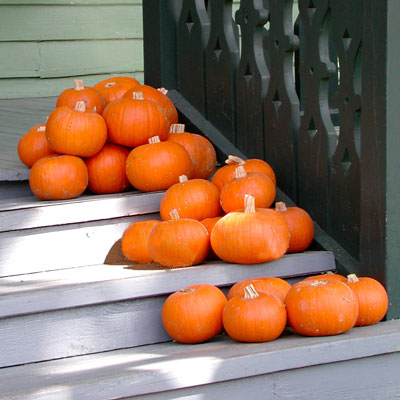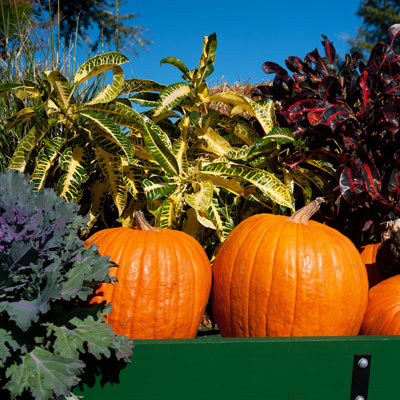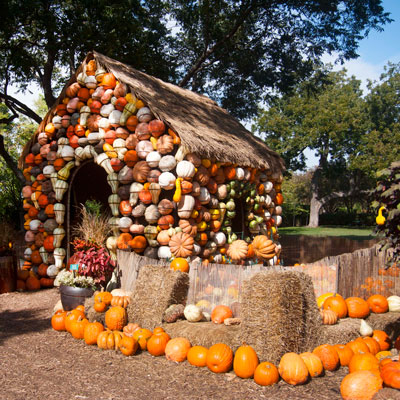Pumpkin-Time Across Texas

Stick with small and mid-sized pumpkin varieties for best results with fall crop.
The latest figures I found online were that Floyd County, Texas, (Floydada) produces upwards of 20,000,000 pumpkins each year, every one of them loaded onto trucks by hand. The second biggest industry in Floydada has to be chiropractics. That’s a lotta heavy lifting.
Scaling it back down to your own home garden, odds are that you’re not wanting to compete at those levels. All you’d like would be a few pumpkins for baking or carving.
Tips to help you get started:
• Plant seeds now. Pumpkins need 90 or 100 days (or more) to mature their early fruit.
• Stick with small to mid-sized varieties. If you have to have the giant carving pumpkins, better buy them at the store. They won’t have time to mature in most of Texas.

These are about as large a variety as you’ll want to try in your fall garden in Texas.
• Pumpkin seeds don’t sprout well if the soil temperature is above 105, so with air temperatures near 100 degrees in most parts of Texas right now, you’ll want to prepare their planting rows carefully. Incorporate organic matter generously into 6- or 8-inch wide bands, then rototill with a mini-tiller to fold it into your native soil.
• Pumpkin plants get quite large, so give them ample room to grow. Sow three or four seeds per site, and space the sites 5 to 6 feet apart in the row. Rows should be 6 or 8 feet apart. (Don’t overplant the first time you grow pumpkins, or you’ll wear yourself out maintaining them.
• Apply pine bark mulch or compost over the plantings to moderate the soil temperature and conserve moisture.
• Watch for squash bugs and their eggs and nymphs as the plants grow, and deal with them as soon as you see them. Sevin dust works fairly well on young bugs. Hand-pick and dispatch the adults as you see them. Mash the clusters of eggs if you find them on the backs of the leaves.
• Pumpkins, like squash, may abort flowers without setting fruit. If you see that happening, watch for bee activity that would be carrying the pollen from the male flowers (straight stems) to the female flowers (swollen stems that will become the fruit eventually). If you don’t see the bees, pluck off a few male flowers and daub the pollen onto the female flowers yourself. Don’t overdo it, however. The plants will only be able to sustain two or three pumpkins per vine.
Simple as that. Send us photos of your success. Better yet, send pies!

The Dallas Arboretum brings in tons and tons of pumpkins each fall. This is just one small part of Pumpkin Village. Most of these pumpkins forming the border are the proper size to grow well in a fall garden in Texas if you’ll plant the seeds now.
